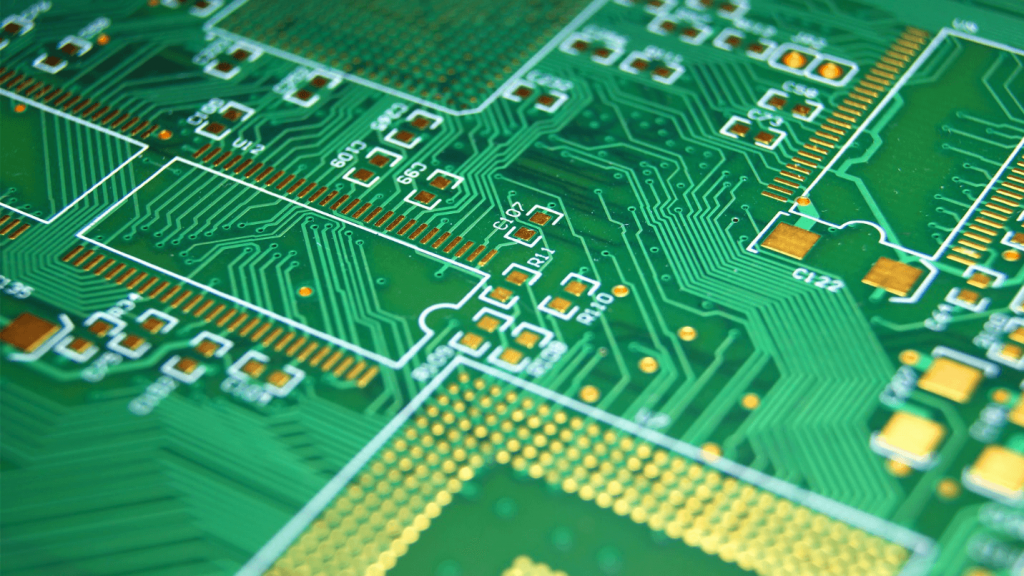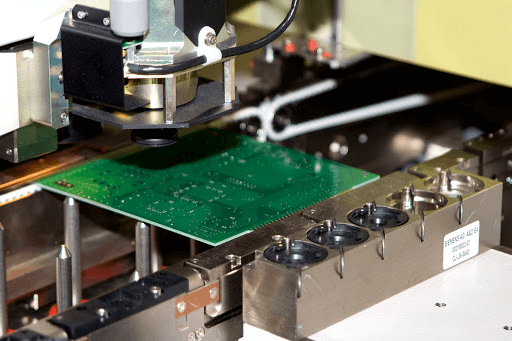Aluminum Based PCB Manufacturer: Why Choose Aluminum PCB?
2020-05-09Aluminum Based PCB Manufacturer: The Engineering Knowledge
Aluminum based PCB manufacturer has become popular over a couple of years. Electronic industries across the globe are turning towards aluminium-based Printed Circuit Boards. The unlimited advantages including flexibility, reliability, and efficiency have made these Printed boards an imperative part of modern electronics.
Aluminum PCBs are essential for modern and compact electronics. The great news is that Printed Circuit boards are no longer limited to just the traditional ones. On the contrary, today, we have numerous types of PCBs, serving different purposes.
In the course of this article, we are going to talk about one of the most popular Printed Circuit Board type, Aluminum Printed Circuit Boards. So, without any further delay, let’s learn about Aluminum PCBs.
Aluminum Printed Circuit Board
Aluminum Printed Circuit boards are extremely common among the light-emitting diodes. The reason being, they have a high heat dissipation factor. Below, we have briefly described the structure of the Aluminum Printed Circuit board.
Structure of Aluminum

Circuit Copper Layer
In the manufacturing of Printed Circuit board, the first thing that you need to do is to etch a copper layer. Most manufacturers use electrolytic copper foil for the etching process. It is important that the etching process is completed with the utmost care.
After all, the etching layer plays a vital role in PCB connections and assembling. The aluminum Printed Circuit boards have a greater capacity of carrying higher current. This is another reason; industries today prefer Aluminum PCB instead of the traditional FR-4.
Insulating Layer
The core technology of aluminum Printed board is its insulating layer. A good insulation layer ensures the quality and reliability of the Printed Circuit Boards. It also defines the heat conduction standards. The insulating layer of the aluminum substrate is perhaps the biggest barrier in the power module structure.
High thermal conductivity of the insulation layer ensures that the heat is spread uniformly and it does not cause any damage. The device’s decreased operating temperature ensures device efficiency, effectiveness, and extends its lifespan.
Metal Substrate
There are several factors that play a vital role in finalizing the metal substrate of the Printed Circuit Board. For instance, the hardness, expansion coefficient, surface state, thermal conductivity, cost, and several others.
When you consider all these factors, you would be easily able to narrow down your choice to one or two metal substrates. Focusing on different factors will help you choose different metal substrates. For example, if your main focus is on technical performance and reduced cost, you should talk to aluminum based PCB manufacturers such as KingPCB.
KingPCB would be able to provide diversity in terms of aluminum plates. For instance, you can choose from 6961, 1060, 5052 and so on aluminum plates. Aluminum PCBs work effectively for all electronics.
Aluminum PCB Performance
Below are some important performance factors of Aluminum Printed Circuit Boards.
Thermal Dissipation
Some of the most common substrates of Printed Circuit Boards such as CEM, FR4 are poor thermal conductors. To ensure the longevity of the electronics, it is critical to dissipate their heat efficiently.
Lack of proper thermal dissipation would lead to high temperature resulting in complete machine failure. To avoid this particular issue, led PCB Board manufacturers now use aluminum substrate.
Aluminum is an excellent heat dissipation; therefore, it can effortlessly resolve this problem without investing additional cost.
Thermal Expansion
To alleviate the problem of thermal expansion on Printed Circuit Boards, the manufacturer now uses Aluminum substrate. Aluminum has excellent thermal expansion capability. The increased expansion ability of Printed Circuit boards has a positive impact on the electronic it is integrated into.
For instance, the thermal expansion of aluminum enhances the reliability and durability of its designated electronics. In addition, the aluminum substrate is excellent for resolving the SMT contraction and thermal expansion.
Dimension Stability
Another great performance factor aluminum Printed Circuit Board is its dimensional stability. So, far, we have learned that the aluminum substrate offers higher stability in comparison to the traditional insulating material of PCBs.
There is just a 2.5 to 3.0 percent of dimensional change in the aluminum substrate after heating it from 30 ° C to 140-150° C.
Types of Aluminum Printed Circuit Boards
When we say aluminum Printed Circuit Boards, we are referring to a number of aluminum PCBs. However, digging a little deeper would help us understand that there are several types of Printed Circuit Boards.
Below are the most common aluminum Printed Circuit Boards.
Flexible Aluminum Printed Board
Flexible Aluminum PCB is extremely efficient and effective for modern and compact devices. You can integrate it into extremely small devices. They compromise of three main layers including the conductive circuitry layer, flexible dielectric insulation, and the aluminum substrate.
All these three layers together make flexible PCBs the top choice. Led PCB Board manufacturers mostly offer their clients flexible PCBs especially when they are designing and developing small electronics.
To construct the insulation layer, the manufacturer uses ceramic plasters and polyamide. Using these materials ensures a higher level of thermal conductivity. They ensure that the heat transfer between the circuit to the aluminum substrate is smooth.
In addition, they ensure that heat energy scatters properly. Below are the perks of using Flexible Aluminum Printed Circuit Board.
Heat Transfer
The presence of aluminum along with the insulation layer ensures high thermal competences. In comparison to the fiberglass, the dielectric layer has the capability of transferring heat in a more reliable and efficient manner.
It can transfer heat ten times more efficiently. The effective heat transfer avoids any sort of destruction that would result due to overheating. It allows the circuity boards to smartly tackle a large amount of current.
Less Weight
Regardless of the type, Aluminum Printed Circuit Boards are extremely lightweight. So, it is safe to say that the flexible Aluminum PCB is also lightweight. The reason being, aluminum itself is not heavy at all.
Durable
The flexibility factor enhances the life of the Printed Circuit Board. This then has a favorable impact on its desired machine.
Less Price
Cost efficiency is the key feature of all types of Printed Circuit boards. The material, aluminum, itself is affordable.
Hybrid Aluminum Printed Circuit Board
In Hybrid Aluminum PCB processing of the nor thermal or insulating substance is completed separately. After that, it joins the aluminum substrate. You would need to use FR-4 resistance in order for it to have 2 and 4 layers.
When you use a non-thermal substance for construction it ensures high heat dissipation and high stiffness. In addition, you do not need a heat sink for Hybrid Aluminum Printed Circuit Boards.
Multilayer Aluminum Printed Circuit Boards
Aluminum Based PCB manufacturer offer multilayer Aluminum PCBs to industries producing power supplies modules. These Printed Boards use a massive amount of heat-conducting material.
Moreover, they come with an additional layer of dielectric material. They use a copper layer of the epoxy layer to cover the sheet of the insulated metal substrate.
Manufacturing Challenges of Aluminum PCB
Aluminum based PCB manufacturer uses all most the same process for the manufacturing of all Aluminum Printed Boards. Therefore, they tend to face some common challenges.
Copper Etching
The copper etching is among the most common challenge. Since the copper foil used for Aluminum PCB is slightly thicker, therefore etching it properly requires skills and the right machinery. Etching also needs width compensation.
Solder Mask Printing
Again, the thick copper causes a problem in solder mask printing. The thicker copper layer often results in a vast difference between the base board, and the trace surface. Thus, it would make solder mask printing a daunting task.
So, the manufacturers often use two-time solder mask printing. In addition, ensure that the solder mask oil is of great quality.

Take Away
Aluminum Printed Circuit Boards are the demand for modern electronics. Therefore, Aluminum based PCB manufacturer, such as King PCB, offer outstanding PCB manufacturing services. They ensure to deliver only high quality, reliable, and efficient Printed Circuit Boards.
They have vast experience, learned staff and modern technology to design and develop sophisticated and complex printed circuit boards.



